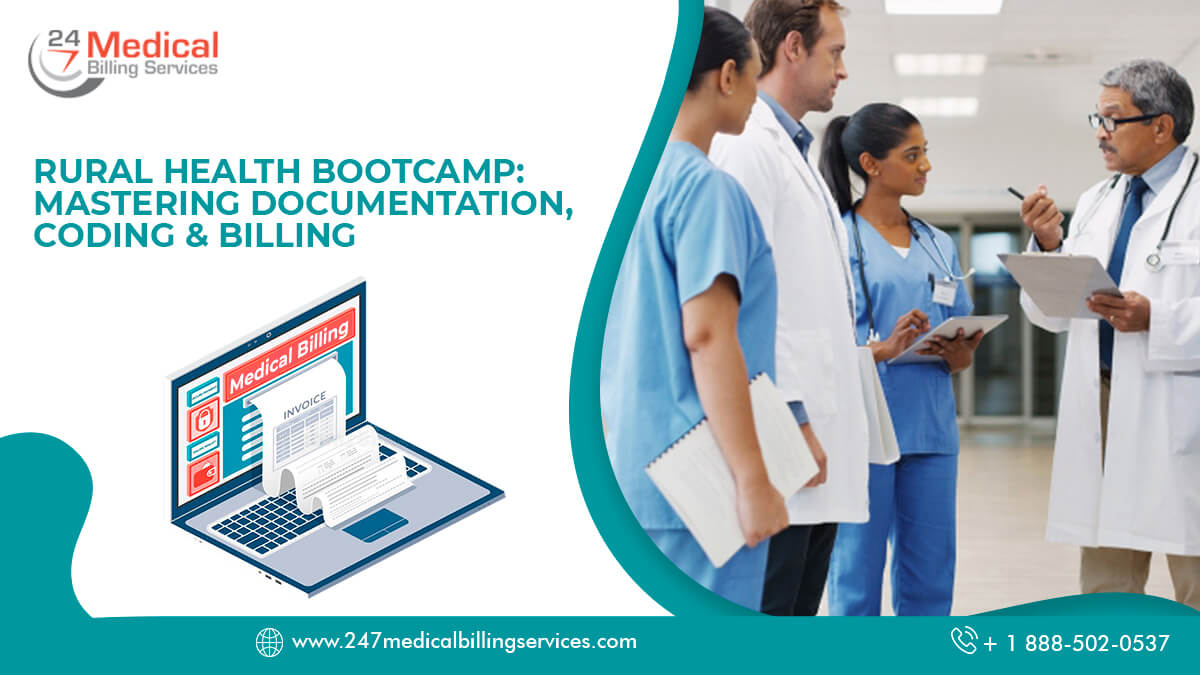
Rural Health Bootcamp: Mastering Documentation, Coding & Billing
Mastering compliance with Evaluation and Management (E&M) documentation criteria is critical in the ever-changing field of rural health care billing and coding. Accurate and complete documentation is essential not only for proper reimbursement but also for showing the medical necessity of services performed. In this blog, we'll look at professional advice and best practices for navigating E&M documentation rules and optimizing billing and coding processes for Rural Health Bootcamp.
Understanding the Importance of E&M Documentation Guidelines
Adequate documentation is the foundation of proper billing and coding in the rural healthcare industry. Guidelines for E&M documentation provide a framework for documenting and communicating critical patient information, such as the medical decision-making, complexity of the visit, and the level of treatment delivered.
Improving Document Accuracy and Completeness
Accuracy and completeness are critical for mastering compliance with E&M documentation criteria. Here are some expert recommendations to help you improve your documentation practices:Thoroughly Examine the Guidelines
Examine the official E&M documentation guidelines established by relevant authorities, such as the Centres for Medicare and Medicaid Services (CMS) or other relevant organizations. Review updates and revisions on a regular basis to stay up to date on any changes.Use Proper Terminology
When documenting patient encounters, use exact and detailed language. Clearly state the patient's condition and services delivered, including the severity, duration, location, and other pertinent details. Avoid using general or ambiguous terminology that could lead to misunderstanding or misinterpretation.Establish Medical Necessity
Document the patient's condition, history, symptoms, examination findings, and the reasons for the chosen course of treatment to demonstrate the medical necessity of each service delivered. It is crucial for adequate and maximum reimbursement to link the diagnosis to the amount of care.Include Documentation Based on Time
Look into including time-based documentation supporting the service level delivered where applicable. Record the total time spent on face-to-face engagement with the patient, including care and counseling coordination. Ensure that the time documented corresponds to the E&M code criteria.Gather Relevant Information
Record all positive and negative findings from the patient's history, physical examination, and diagnostic tests. Include any changes in the patient's condition, the implications of treatment decisions, and any follow-up plans. Accurate coding and billing will be facilitated by clear documentation of the care provided.Keep Consistency and Clarity
In documentation, consistency is essential. Check that the level of service documented corresponds to the associated E&M code. Inconsistencies or contradicting information in the medical record should be avoided. To improve readability, use clear and readable handwriting or electronic material.Stay Compliance with Documentation ,Coding & Billing for Rural Health Bootcamp
Ongoing education and self-auditing are critical for maintaining compliance with E&M documentation criteria. Consider the following approaches:Providing Education
Participate in professional development programs, conferences, workshops, and online resources regularly to stay up to date on changing coding and documentation rules. Networking with industry professionals and participating in peer conversations might provide helpful information.External Auditing
Consider using external auditing services regularly to get an unbiased assessment of your documentation practices. External auditors can provide useful comments, uncover potential compliance holes, and recommend enhancing your billing and coding systems.Internal Auditing
Conduct regular internal audits to ensure the accuracy and compliance of your documents. Identify areas for improvement, provide feedback to rural healthcare professionals, and take necessary corrective steps. These audits assist in proactively identifying and addressing any concerns.Embrace Compliance for the Best Results
Compliance with E&M documentation rules is a never-ending path that necessitates devotion and constant development. You can improve your documentation's accuracy, completeness, and medical necessity by following best practices and utilizing expert advice. This not only assures proper reimbursement but also adds to better patient care, more effective communication, and outstanding results.Remember that compliance is more than just checking boxes; it is also about ensuring that accurate and complete documentation accurately represents the quality of care provided. Accept compliance as a guiding principle in your RHC clinic billing and coding methods, and you'll be able to navigate the ever-changing rural healthcare industry confidently.
See also: Interesting Billing Facts Of Rural Health Centres (RHCs)

.png)